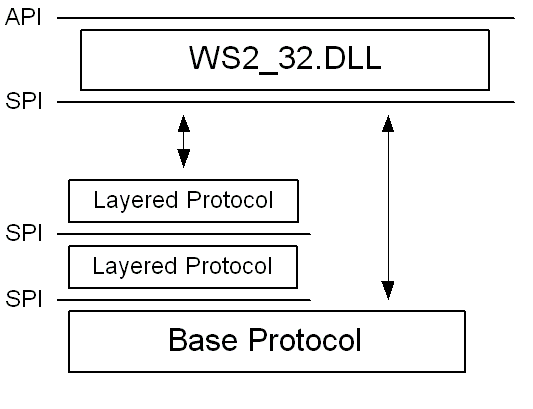
| Platform SDK: Windows Sockets |
Windows Sockets 2 accommodates the notion of a layered protocol. A layered protocol is one that implements only higher level communications functions, while relying on an underlying transport stack for the actual exchange of data with a remote endpoint. An example of such a layered protocol would be a security layer that adds protocol to the connection establishment process in order to perform authentication and to establish a mutually agreed upon encryption scheme. Such a security protocol would generally require the services of an underlying reliable transport protocol such as TCP or SPX. The term base protocol refers to a protocol such as TCP or SPX which is fully capable of performing data communications with a remote endpoint, and the term layered protocol is used to describe a protocol that cannot stand alone. A protocol chain would then be defined as one or more layered protocols strung together and anchored by a base protocol.
This stringing together of layered protocols and base protocols into chains can be accomplished by arranging for the layered protocols to support the Windows Sockets 2 SPI at both their upper and lower edges. A special WSAPROTOCOL_INFOW structure is created which refers to the protocol chain as a whole, and which describes the explicit order in which the layered protocols are joined. This is illustrated below.
